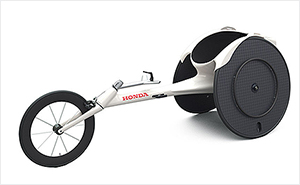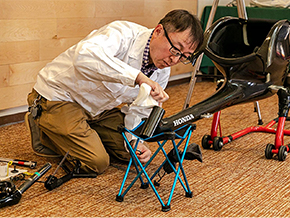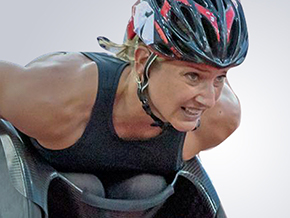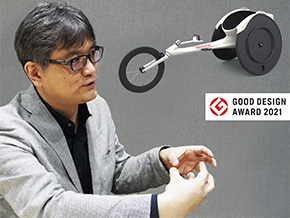An encounter between Honda founder Soichiro Honda and Taiyo-no-Ie (House of the Sun)
1978
In 1978, Honda founder Soichiro Honda visited Taiyo-no-Ie (House of the Sun), a facility in Beppu City, Oita Prefecture, where people with disabilities could undergo job training. He was deeply impressed by their energy and enthusiasm, and he fully supported the facility’s philosophy of “No charity, but a chance!”

1981
In 1981, Soichiro Honda established the special subsidiary Honda Sun in Hiji Town, Hayami County, Oita Prefecture, with the goal of “encouraging people with disabilities to become socially independent.” This was just three years after his encounter with Taiyo-no-Ie.
The same year, the 1st Oita International Wheelchair Marathon was held in Oita City, Oita Prefecture; it was the world’s first-ever international marathon solely for wheelchair users. Racing wheelchairs had not yet been invented, and so participants competed in the same wheelchairs they used for everyday life. A total of 117 athletes from 15 different countries took part. One of these athletes was particularly passionate; indeed, he had previously spoken with Soichiro Honda about wheelchair racing, and would go on to become an associate at Honda Sun and initiate Honda’s links to wheelchair racing.
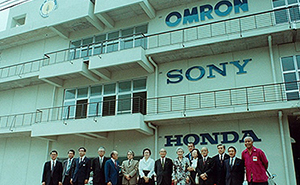
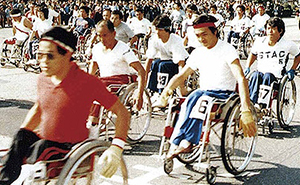
1993
This same athlete’s passion inspired engineers at Honda R&D. The engineers made contact with associates at Honda Sun, and a team of 12 people launched the Racing Wheelchair Research Group as a means of promoting self-development. Before long, they set their sights on building a racing wheelchair and, in just a year, they succeeded in completing an all-aluminum prototype.
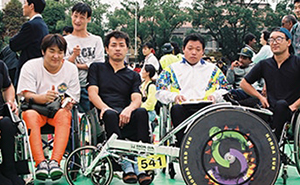
1999
The Racing Wheelchair Research Group subsequently received official recognition from Honda Sun and Honda R&D Sun, and was renamed Honda Athlete Club. As a result, its activities received added momentum.

2000
In 2000, development of racing wheelchairs was entrusted to Honda R&D. The company used athlete feedback and trial and error to make progress with development.
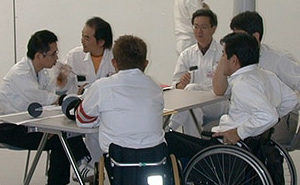
2002
Honda Sun received support from Honda R&D for the development of new technologies, and built an initial prototype of the world’s first full-carbon body racing wheelchair. The wheelchair was provided to athletes sponsored by the Honda Athlete Club.

2012
Honda continued to develop racing wheelchairs. By coming up with new models every year and providing them to its athletes, the company contributed to victory in many races.
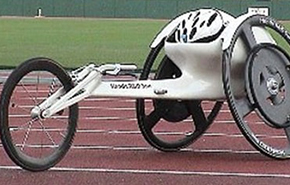

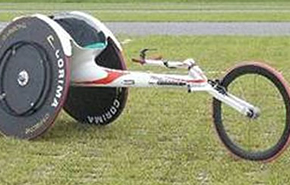
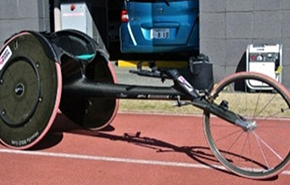
2013
In 2013, Yachiyo Industry joined Honda R&D Sun and Honda R&D in developing and producing racing wheelchairs. The three companies worked together to establish a system of mass-producing the KIWAMI carbon-frame racing wheelchair. The following year, Yachiyo Industry commenced production and sales of two models: a mass-production version of the KIWAMI; and the IDOMI, which combined a carbon mainframe with an aluminum seat frame.
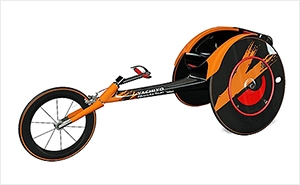
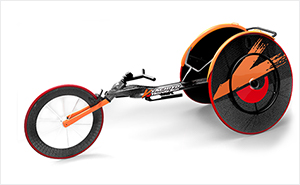
2019
In 2019, Honda incorporated its best technologies into the KAKERU racing wheelchair, a new model that promised even greater performance. Comprising a carbon monocoque frame, carbon front fork, and carbon disc wheels, it featured an entirely new frame shape and steering mechanism. The KAKERU is a next-generation racing wheelchair capable of maximizing the potential of athletes battling for victory.
